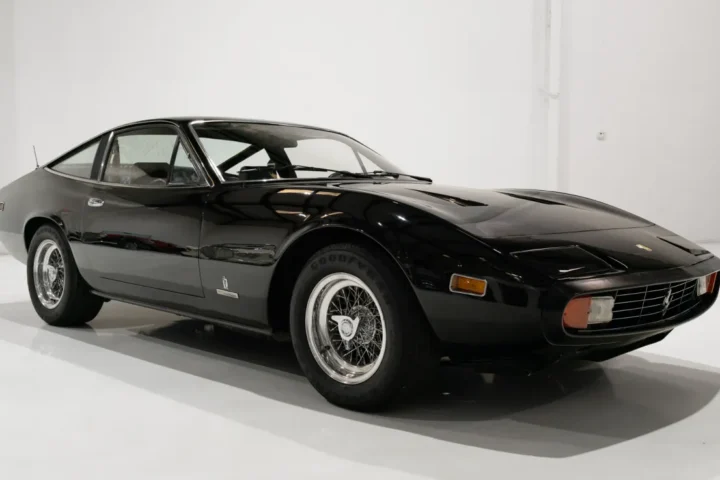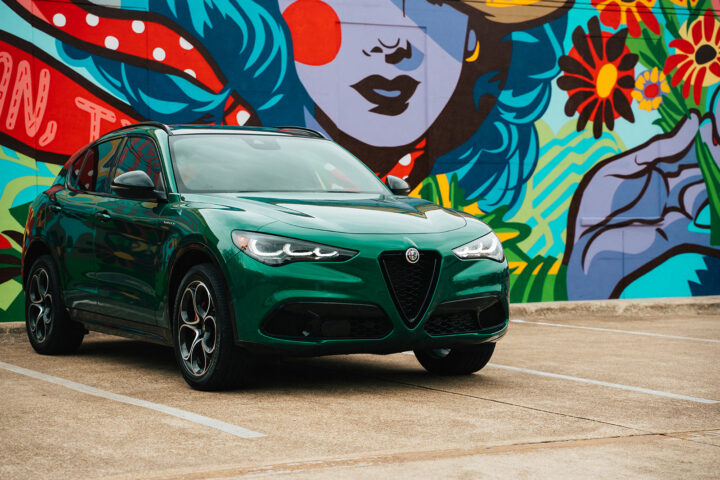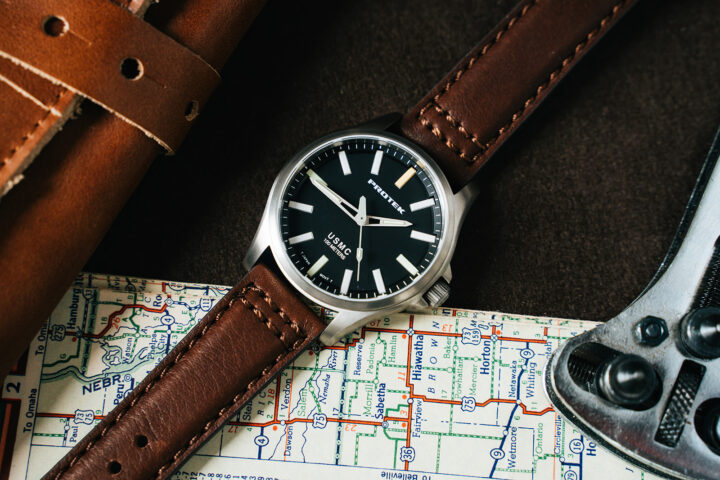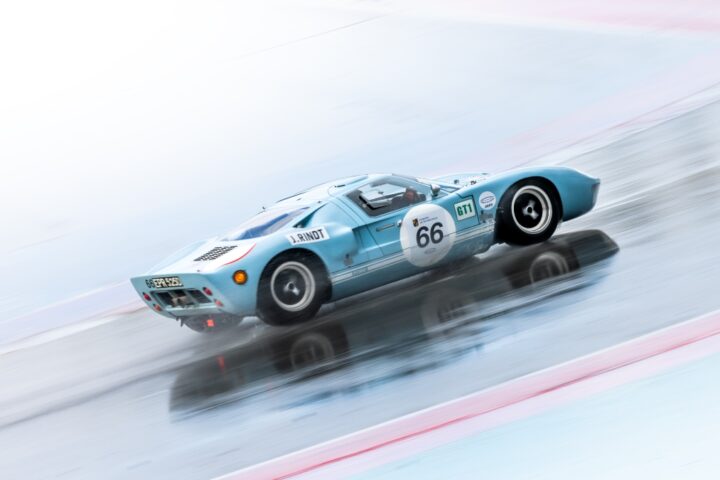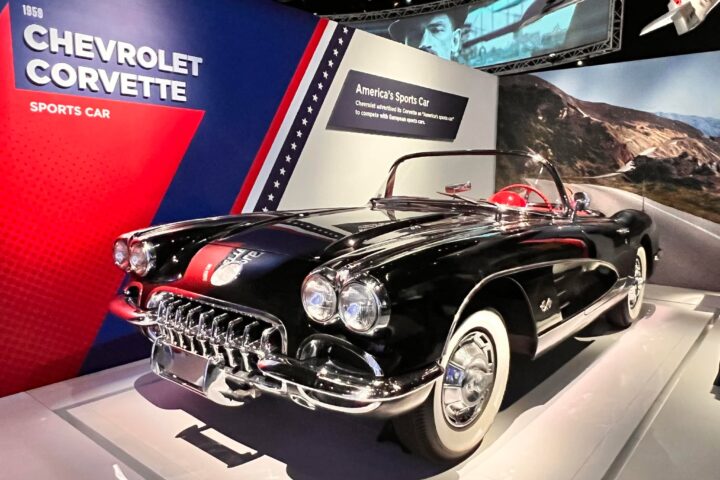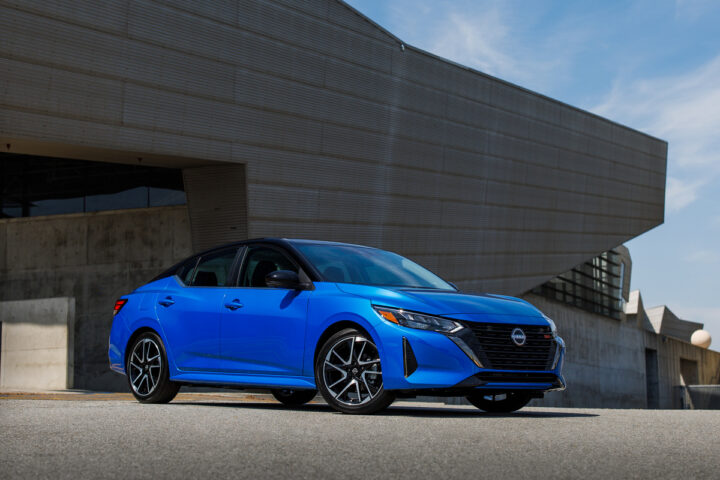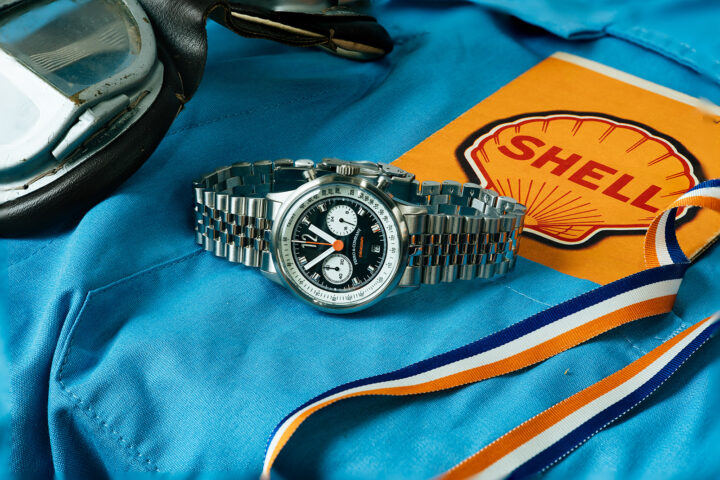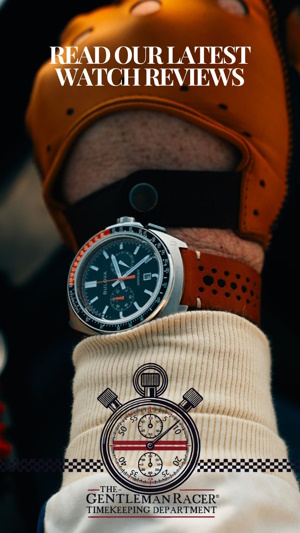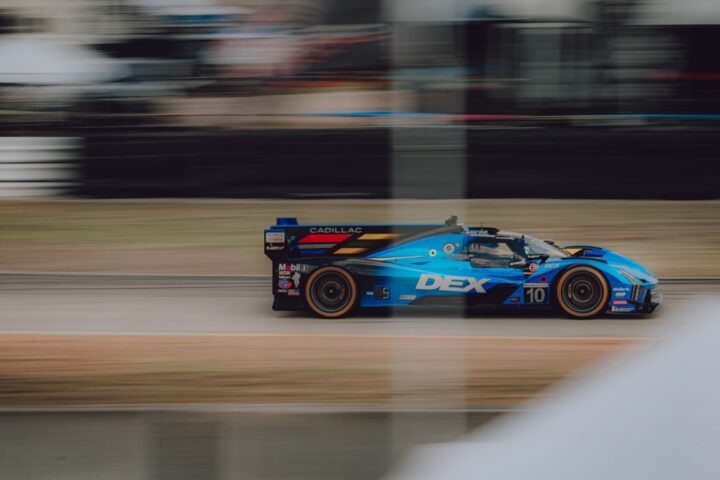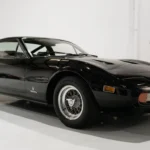These cars are rare, but they are rarer to be offered to private collectors, four of the original seventeen are in the Cité de l’Automobile museum in France. Another resides in Museu do Caramulo in Portugal. Others reside in private collections and are seldom seen. Chassis 57551 was completed on July 23, 1937, with an Atalante body, finished in black and was ordered to match the October 1937 Paris show car. It is offered for sale by RM Sotheby’s Private Sales division.

1937 Bugatti Type 57SC Atalante
Of the 48 Bugatti Type 57S models built just 17 were bodied as Atalante coupes. The name Atalante was derived from a heroine of Greek mythology, Atalanta and the “S” stood for “Surbaissé” (lowered). The car was a marvel of its time, with a dry-sump oiling system, innovative suspension, and 175hp, the 57S was one of the fastest cars sold in Europe in its day and the ultimate in luxury.
These cars are rare, but they are rarer to be offered to private collectors, four of the original seventeen are in the Cité de l’Automobile museum in France. Another resides in Museu do Caramulo in Portugal. Others reside in private collections and are seldom seen. Chassis 57551 was completed on July 23, 1937, with an Atalante body, finished in black and was ordered to match the October 1937 Paris show car. It is offered for sale by RM Sotheby’s Private Sales division.
These cars are rare, but they are rarer to be offered to private collectors, four of the original seventeen are in the Cité de l’Automobile museum in France. Another resides in Museu do Caramulo in Portugal. Others reside in private collections and are seldom seen. Chassis 57551 was completed on July 23, 1937, with an Atalante body, finished in black and was ordered to match the October 1937 Paris show car. It is offered for sale by RM Sotheby’s Private Sales division.
Full Listing of Chassis Number 57551 below:
Bugatti Type 57S, chassis no. 57551 with engine no. 30S, was completed on 23 July 1937 with an Atalante body finished in black with pigskin upholstery. The body configuration, with its low headlight placement between the radiator and front fenders, was identical to the October 1937 Paris show car. It was delivered by the factory just a week later to its first owner, Jean Lévy of Strasbourg, Deputy Administrator of the family-owned “Grands Moulins de Strasbourg,” a successful grain milling company established by his father, which is still in business today.
Lévy used his Atalante until the beginning of the war and transferred it to Maurice Weber, manager of the livestock feed operation at the Grands Moulin, in 1941, presumably for safekeeping.
In 1946 the Atalante was sold by Weber, ending up in the summer of 1947 with Pierre Pruvost in Bezons. A year later it was acquired by a Paris owner and displayed on the 15 June 1949 Concours in the Bois de Boulogne, now sporting modification to the rear window, fenders, and added chrome flashing, work which may have been carried out by Figoni et Falaschi.
Chassis no. 57551 passed through a known succession of owners in France before being brought to the U.S. in 1959 by Colin Doane, a U.S. Air Force Officer. Doane drove it 3,000 miles over the next two years, including a 500-mile trip from Boston to Watkins Glen.
In 1961, Doane sold the car into the fabled collection of casino magnate William F. Harrah. While in the Harrah Collection it received a comprehensive restoration with the chassis and running gear restored by O.A. “Bunny” Phillips, including the installation of a replacement engine block (originally numbered 15S) and correct gearbox, no. 357, and the body in Harrah’s shops. The engine was upgraded to the most desirable Type 57SC specification, with the addition of a late-production five-bladed supercharger. Several aspects of the Atalante were returned to the original configuration, including re-creating the original pair of small rear windows and removing some of the chrome embellishments that had been added in France in the late forties. Completed in 1976, it earned the ultimate accolade for quality, appearance, design, and performance: Best of Show at the 26th Pebble Beach Concours d’Elegance.
It was acquired during the disposition of the Harrah Collection by Dr. Herbert Boyer and later was acquired from him by the current owner, a distinguished private collector who continued to enjoy and maintain it carefully, until consigning it to RM Auto Restoration in 2013 for a complete restoration to modern concours standards.
The Harrah restoration had been well maintained, thus the restoration team found the car to be in very good condition. They were quite delighted to find much of the original body wood intact, including the entire rear section, which was retained and is still present in the car today. The result was returned to Pebble Beach and, now exactly as it had first been delivered, was awarded Best in Class, a superb honor. This was followed by Best of Show at both the Concours d’Elegance of America and the Keeneland Concours in 2015.
It is one of the most beautiful, desirable, and advanced of all Bugattis, with Jean Bugatti’s lean, sleek, aggressive Atalante coachwork perfectly complemented by the low Type 57S surbaissé chassis. One of four built in this style, it has a well-documented history from new and is one of the most attractive, desirable, and best-performing of all Bugatti road cars.






